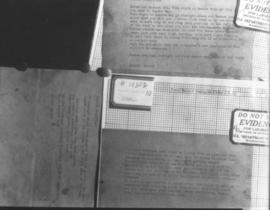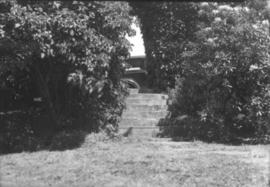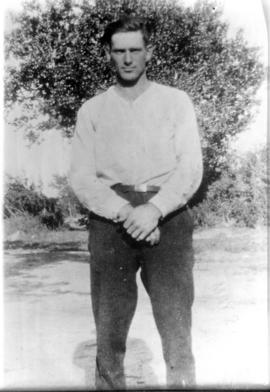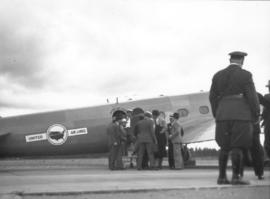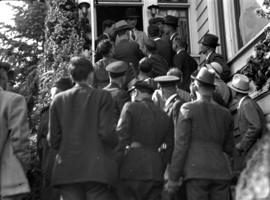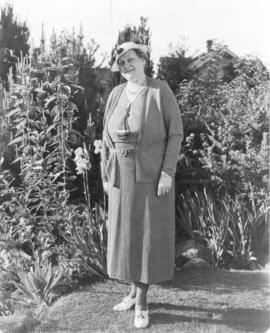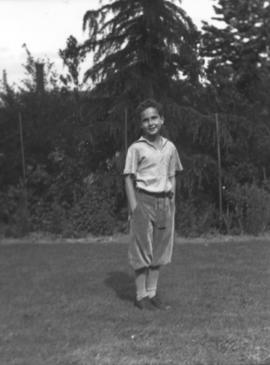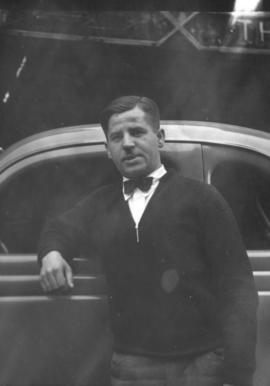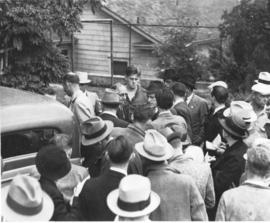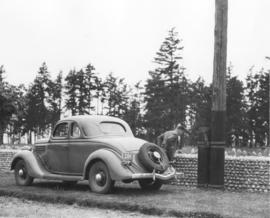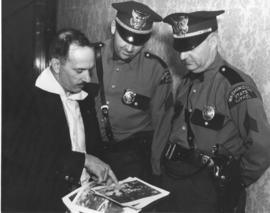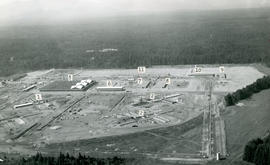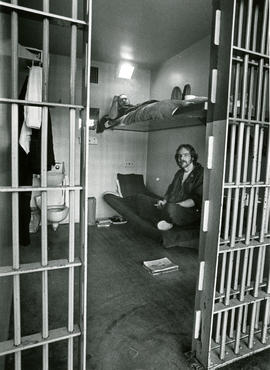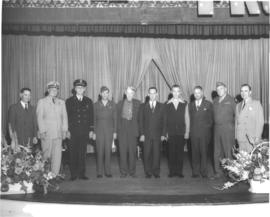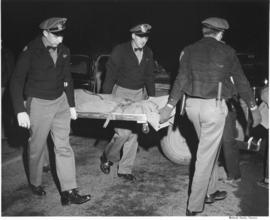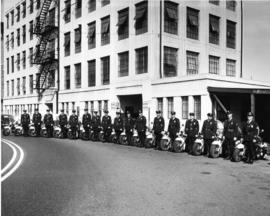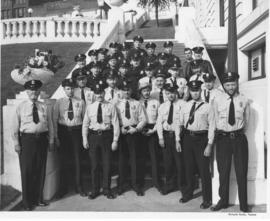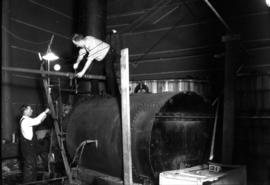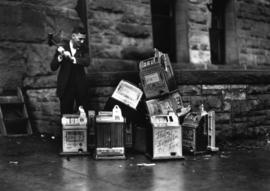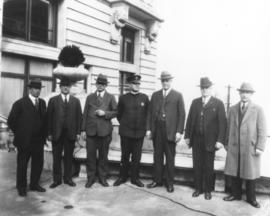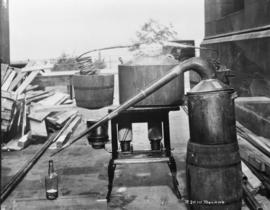- Item
- 1935-05
Part of Richards Studio Photographs
Evidence in the kidnapping case of nine year old George Hunt Weyerhaeuser; communication by letter from the kidnappers. The first ransom note from the abductors arrived around 6:30 p.m. in the evening on May 24, 1935 by special delivery. It demanded $200,000 in ransom in special unmarked denominations. It gave the family 5 days to raise the money and gave the instructions to take an ad in the Seattle PI signed "Percy Minnie." The typed letter was signed "Egoist, Egoist" and also bore George's signature. Later communications contained precise directions on delivering the money. The letters indicated that they were written by an educated, intelligent and organized person. (T. Times 5/25/1935, pg. 1 plus succeeding days)
Kidnappings--Tacoma--1930-1940; Weyerhaeuser, George H.--Correspondence; Evidence (Law);
